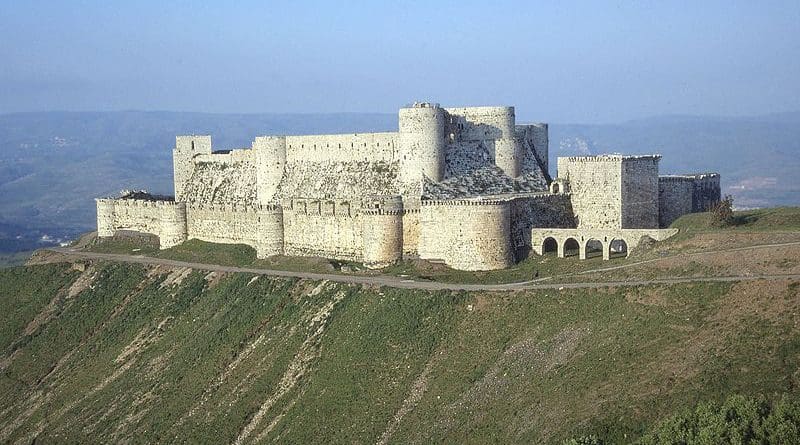Crusaders’ Castle ‘Krak Des Chevaliers’ – First Person
Back in the 1990s we were returning to Damascus from the TalSalhap Sugar plant. We had made a proposal for a steam boiler for the sugar factory, and we were returning. Our guide, our representative from Syria, wanted to show an ancient Armenian church in the valley. We toured the church, inside it was a thousand years of magnificent woodcarvings all around.
Then we saw the majestic medieval castle on the way, we were not even aware of where we were, the importance of the castle. We arrived at the castle gate, we asked the boy at the gate about the guard. The guard came from one of the houses next door, opened the castle door with the medieval big keys in his pocket, and showed us around. He spoke amazingly French and English. As a child, he learned that he had listened to the speeches of foreign guides when he was a child, the brain made a sound recording, he did not know what he said, but he was telling the voice recording of this brain to every incoming traveler, even repeating the jokes of the original foreign guide in some places. He was happy when we laughed at jokes.
Krak des Chevaliers castle was built by the Crusaders on top of an old castle in Syria in 1142. For almost a hundred years, Crusaders collected the tax of the region they were in. Nearly 2000 Crusader warriors of different nations from different European countries occupied their own places of the castle in accordance with the architecture of their own countries. The English round table meeting table layout, the French cathedrals, German, Spanish and Polish architecture were reflected.
After a hundred years of ruling, the Crusaders left the castle to the Muslim Mamluks after a short siege in 1270 without a fight. The reason for this was the fake letter war trick applied by the Muslims cunningly. Later, the people around the castle moved into the castle, they lived in the castle for years, this became their home and living space.
In 1917, after the first world war, the place where the castle was located was occupied by the French armies. The French commanders removed the people inside the castle in 1934 to protect their national heritage from the Crusader period. They cleared the castle, emptied it and turned it into a open-air museum.
The main structure of the castle, where people were present, was being preserved and repaired. When it became a museum, the place was kept empty, there was no one left. Occasionally, by chance, a few travelers like me were visiting the Castle.
After the Second World War ended, in 1946 the French colonial rule left, Syria became an independent state. The castle still remained as museum, but the money could not be spared for its maintenance, the thousand-year-old structure was left in the brutal merciless hands of nature, the corrosive desert winds.
The place that impressed me the most was the dungeons. It was in three separate parts. Minor offenders were kept in flat cages. Medium offenders were incarcerated at a lower level. There were also wells where serious criminals and prisoners of war were thrown. Those who were thrown there had no chance to get out.
The inside of the castle was surrounded by inclined roads, there were no stairs, horses, cavalry and carriages could carry people and goods up these slopes.
A thousand years ago, the door keys of a place where the Crusaders, European kings, warriors, captured enemies entered with pride or fear, tied the region to tribute, were now under the protection of a local guard. Renovation maintenance and repair was no more. On the roof of the castle are my photographs with the landscape of Northern Syria behind me.
Now the castle is on the UNESCO World Heritage list. There are no treasures, paintings, sculptures, important items inside, it is empty, but it still stands as the most important architectural structure of the Middle Ages, which is still preserved today.

